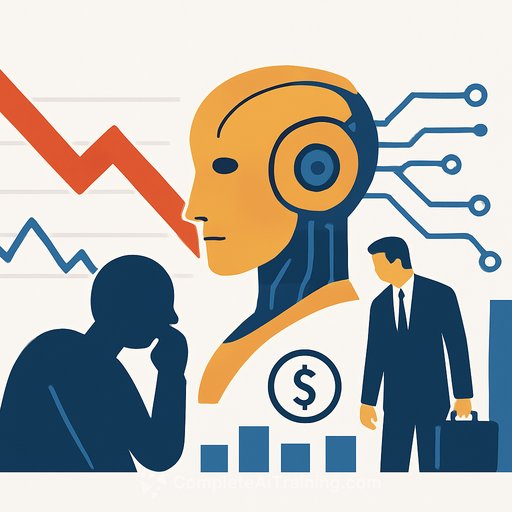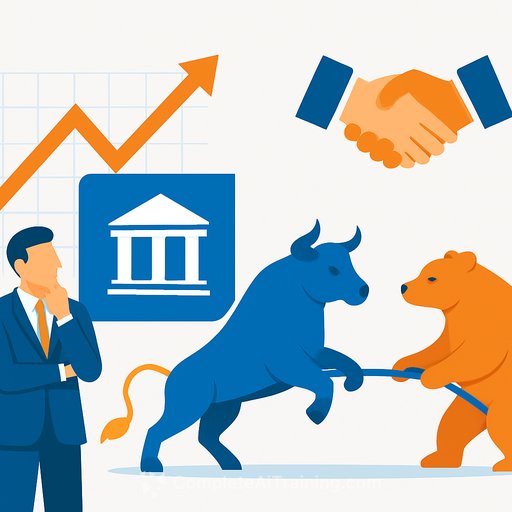Jeff Bezos agrees with Sam Altman: AI is in a bubble-yet the payoff could be gigantic
Jeff Bezos says we're in an AI bubble. He also says that's not a bad thing. Speaking at Italian Tech Week, he called it an "industrial bubble" rather than a financial one-echoing Sam Altman's view that excitement has overshot, while the underlying trend is real.
Altman recently warned that "smart people get overexcited about a kernel of truth," comparing today to the late-1990s tech boom. Bezos went further: industrial bubbles fund real capacity. They can leave behind enduring infrastructure and a few dominant winners, even if many firms fail along the way.
Industrial vs. financial bubbles: why finance leaders should care
Bezos drew a line between financial manias and industrial buildouts. In an industrial bubble, capital floods into production: chips, data centers, models, tooling, and talent. The aftermath can be messy for equity holders-but productive for society and the winners that survive.
He cited the 1990s biotech/pharma surge. Many public companies lost money or disappeared, yet the period accelerated the development of life-saving therapies. Think dot-com-era excess funding the future internet. The parallel is instructive: as with the dot-com bubble, the scaffolding built in the frenzy can outlast the hype.
Investor take: how to allocate through an AI bubble
- Barbell your exposure: core infrastructure and clear cash generators on one side; small, time-boxed bets on emergent apps on the other.
- Underwrite on unit economics, not narratives: gross margin trajectory, cost-to-serve vs. price compression, payback period, and renewal rate.
- Favor scarce advantages: proprietary data, distribution, workflow depth, switching costs, and regulatory moats.
- Watch second-order winners: providers of compute, memory, networking, energy, and MLOps that monetize the buildout regardless of app turnover.
- Pre-mortem your thesis: model commoditization, model provider dependency, chip supply constraints, and policy shifts.
- Keep liquidity discipline: set stage-gated funding and kill criteria; avoid chasing up-rounds without incremental proof.
Corporate finance playbook for AI spend
- Set ROI rules: tie AI pilots to a clear P&L line (gross margin lift, headcount efficiency, DSO reduction) with a 90-180 day checkpoint.
- CapEx visibility: align compute commitments and data contracts with real adoption curves; avoid multi-year lock-ins without price-step protections.
- Vendor risk: require SOC2/ISO, model lineage, data handling terms, and exit plans for model/provider swaps.
- Cost realism: assume rapid model price declines and quality improvements; re-price your stack quarterly.
- Data advantage: inventory proprietary data, legal rights, and labeling costs; this is your defensibility and margin lever.
What to watch as the dust eventually settles
- Revenue quality: rising net revenue retention, declining CAC, sub-12 month payback, and expanding contribution margin.
- Usage-to-revenue alignment: DAU-to-paid conversion, API call growth per account, and feature-level monetization.
- Distribution: entrenched channels, enterprise integrations, and contractual embeds that create lock-in.
- Model strategy: clear plan for multi-model routing, cost arbitration, and resilience to model vendor changes.
Mark Zuckerberg recently suggested he'd rather "misspend a couple hundred billion dollars" than be late to superintelligence. That's the current mood: everything gets funded when optimism peaks. Bezos acknowledged this, noting investors struggle to separate good ideas from bad in these periods.
Bottom line
Bubble or not, AI is real. Bezos expects the societal benefits to be "gigantic," with winners emerging after the shakeout. Finance leaders should treat this as market-funded R&D: maintain exposure, price risk tightly, and let the data dictate incremental capital.
Selectivity will matter more than bravado. Own the infrastructure that gets used, back teams with distribution and data, and sunset projects that don't earn their keep.
Resources
Your membership also unlocks:






